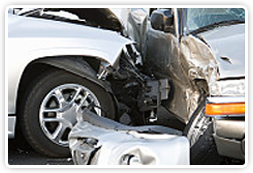Myths about Drinking
Alcohol collisions are still a major problem on our road ways. These collisions are because of all the misconceptions people have about drinking and driving. How many of these DUI & DWI myths have you heard before and thought to be true? Read below and know your facts:
Myth: Beer before liquor, never been sicker, Liqour before beer, you’re in the clear
Fact: A drink is a drink any combination and amount you choose to consume can make you sick.

Myth: Sucking on pennies will lower your (BAC) Blood Alcohol
Fact: Germs and a mouth full of diseases is all you will get from sucking on pennies. There is no way to beat the breathalyzer test except to not to drink.
Myth: You can drive as long as you are not slurring words or acting erratically.
Fact: The skills and coordination needed for driving are compromised long before the obvious signs of intoxication are visible. In addition, the sedative effects of alcohol, combined with the late night hours, place you at much greater risk of nodding off or losing attention behind the wheel.
Myth: I always smoke marijuana, and drive and I’m fine?
Fact: Numerous studies have shown that stoned drivers can be every bit as dangerous as drunk drivers. Depending on what on what you’ve smoked, swallowed or injected, drug impairment ranges from slowed reflexes, flawed depth perception to hallucinations and seizures. And if you’ve been mixing alcohol and drugs and are tired from partying all night, this combination can be even deadlier. New legislation now allows police to test drivers for drug impairment and charge those that refuse to provide blood, saliva or urine samples.
Myth: When I’ve been drinking and decide to drive, I drive slowly on all roads.
Fact: Drunk driving is not safe at all speeds, all times, and all roads. Driving to slow also can be hazardous. Police are always on the road and in search of drunk drivers.
Myth: Drink Coffee, Caffeine will sober you up.
Fact: Caffeine may help with drowsiness, but it doesn’t counteract the effect of alcohol on decision-making or coordination. The body needs time to metabolize (breakdown) alcohol and even more time to return to normal. There are no quick cures-only time will help.
Myth: Larger people with more body mass can handle their alcohol better so they can easily drunk and still drive.
Fact: Although body size, sex, and how much you drink on average are all factors in what determines if you are “drunk” any alcoholic drink will begin to deter your motor skills, slow your judgement and blur your vision. Any drink you take regardless of your size will make it more dangerous and most likely will be considered drunk driving.
Myth: If I get some food in my system after I drink, I’ll be fine to drive.
Fact: Although you should eat with or before you drink alcohol, food won’t reduce your blood alcohol level. Time is the only cure to get alcohol out of your system.
Myth: If I get pulled over, I know plenty of ways to trick a breathalyzer into believing I am not drunk, such as holding my breath or using mouthwash.
Fact: There is no way to trick the breathalyzer. Have a realistic plan for transportation prior to consuming alcohol.
Myth: If I just drink beer and no wine or hard liquor, I will be able to drive home.
Fact: One 12 once beer has as much alcohol in it as about 5 onces of wine and about 1 shot of whiskey or vodka (1.5 onces). No matter what kind of alcohol you are drinking, its dangerous to be behind a wheel.
Myth: I won’t get caught.
Fact: Police have stepped up on ride programs throughout Ontario. The minimum charge if caught with .05 is a 3 day drivers licence suspension, and your car is impounded.
Myth: Experienced drinkers have a higher alcohol tolerance
Fact: While it is true that those who drink more heavily than the average seem to have a higher tolerance to the effects of alcohol, it has no bearing on what your blood alcohol concentration (BAC) will be. It may take an experienced drinker 4 or 5 drinks to feel the same effects as what 1 or 2 would have a person that has less experience with alcohol. However, any amount of alcohol will begin to affect reflexes and judgement. As well, even though the uninhibited feelings are not as present, the alcohol in the blood stream is still present.
Myth: One drink an hour is safe.
Fact: Perhaps one of the biggest myths of all, and the one that in believing it caused the most damage to drivers who also enjoy social drinking is that a drink a hour will not impair you. So many people believe that if they pace their alcohol consumption and keep it at no more than one drink an hour, they will be fine. This is simply not true.The legal limit is 0.08 or 80mg. It’s a measure of how much alcohol is in the bloodstream. There are many factors which will determine how fast alcohol will get into the bloodstream and how long it will stay there for. It is impossible to account for every single factor and many people are dumbfounded to discover they have been driving impaired.
The only way to know for sure that there is no alcohol in your bloodstream is to simply not drink for at least 24 hours before you drive.
